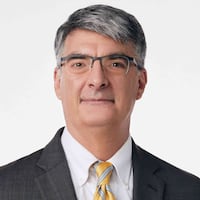General manager Travis Schlenk is on the phone “a lot of hours.”
The Hawks draft board has more than 100 players on it.
The top 44 prospects have been ranked. There are 16 more names to be slotted.
Staff meetings and mock drafts are being held in the war room.
Nearly 20 players workouts and visits have been completed.
The analytics team is evaluating potential trades.
Some members of the scouting department are already off watching players who will be available next year.
It’s almost time for the NBA draft. This the storm before the calm.
The Hawks, currently, will have six selections in Thursday's draft — three in the first round (Nos. 8, 10 and 17) and three in the second round (No. 35, 41 and 44). Schlenk has been open about his desire to trade some of his accumulated assets — definitely in the second round and perhaps in the first round. There is much speculation that the No. 4 overall pick is available from the Pelicans after the pending deal for Anthony Davis to the Lakers.
The Hawks have needs with athletic wings desired for a position-less league and a roster with only two centers. Still, there is one driving force behind this draft.
“We won 29 games (last season),” Schlenk said last week. “We are still looking for the best players available. Whatever that position is, we are going to take them and figure it out on the back end.”
However, there is a plan beyond the best player available strategy.
“What you see when you get to the later rounds of the playoffs, and even you are seeing in during the regular season, is the position-less basketball,” Schlenk said. “If you can have five guys out there who can space the floor and handle the basketball and defend multiple positions, those are the types of things we are looking for and will continue to look for.”
Schlenk and his staff have spent much time evaluating players — watching them in person and on film. They watched the NBA scouting combine in May and interviews 18 players. The final piece of the puzzle were player workouts, a step the Hawks concluded on Friday. Players get tested in their ability to take instruction and judged on how quickly they adapt to different terminology, different sets and how they interact with coaches and players.
Schlenk warned that workouts are only part of the process.
“I think, and teams have made big mistakes, when you disregard what you’ve seen from a player for four years in college and then he comes and has a great 45 minute workout and you change (your evaluation),” Schlenk said. “That would be a mistake.”
About the Author
Keep Reading
The Latest
Featured


